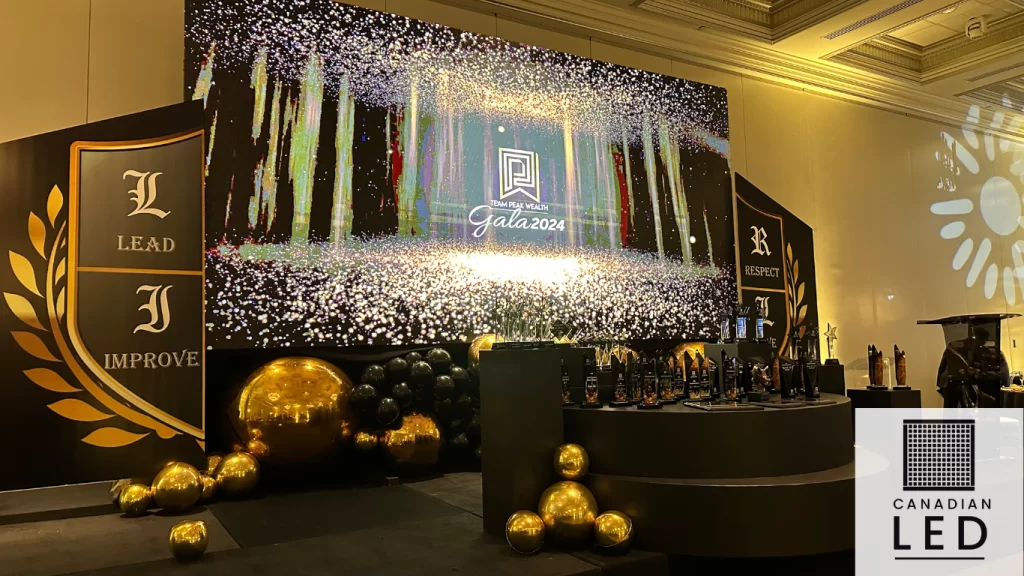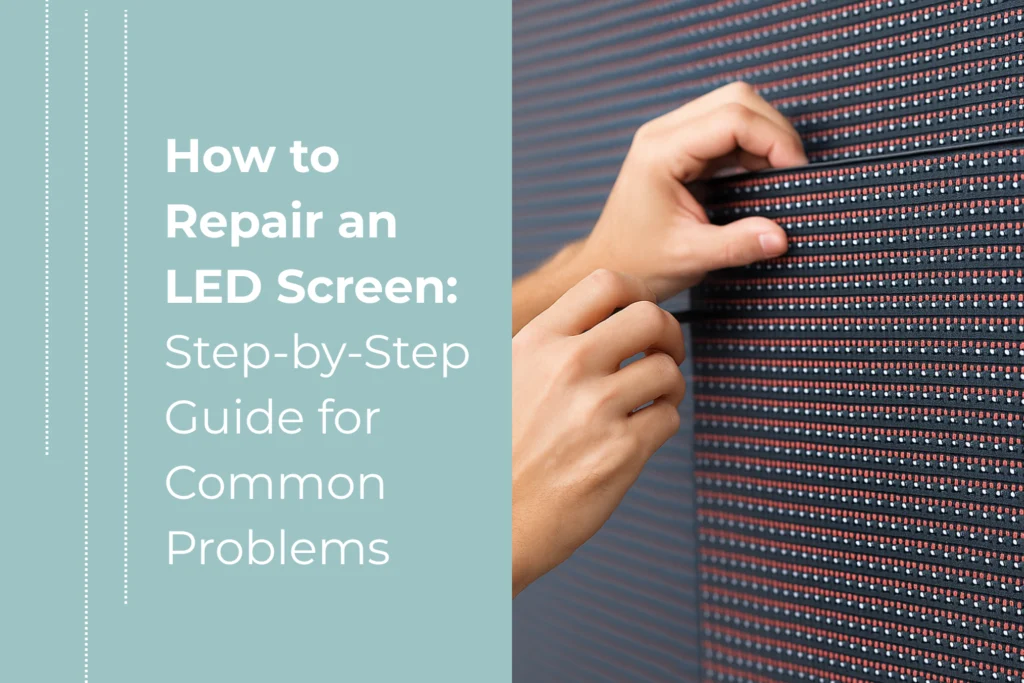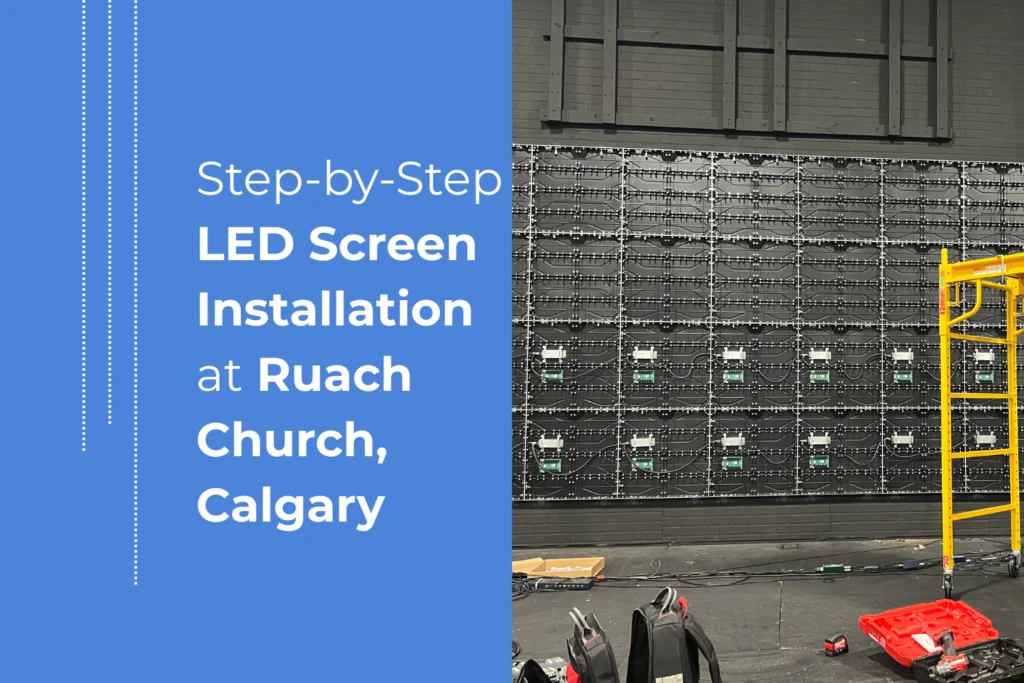Types of LED Screens
One of the first things I tell clients is that there is no single perfect LED screen. Every business has different needs, and the screen you choose will depend on several factors, including location, purpose, and budget. Here’s a breakdown of the most common types of LED screens that I’ve worked with:1. Indoor LED Screens
Indoor LED screens are designed for use in spaces where the environment is controlled, such as offices, conference rooms, retail spaces, and LED screens for churches. These screens deliver high resolution and vibrant visuals, making them ideal for situations where viewers are close to the display. The pixel pitch (distance between the pixels) is typically smaller, resulting in crisper, clearer images.- Best For: Retail environments, corporate offices, and places where people gather indoors, such as churches and exhibition spaces.
- Key Features: High resolution, sleek design, moderate brightness (usually around 1000-1500 nits).
- Considerations: Indoor LED screens are not designed to withstand harsh weather conditions, so they should only be used inside.
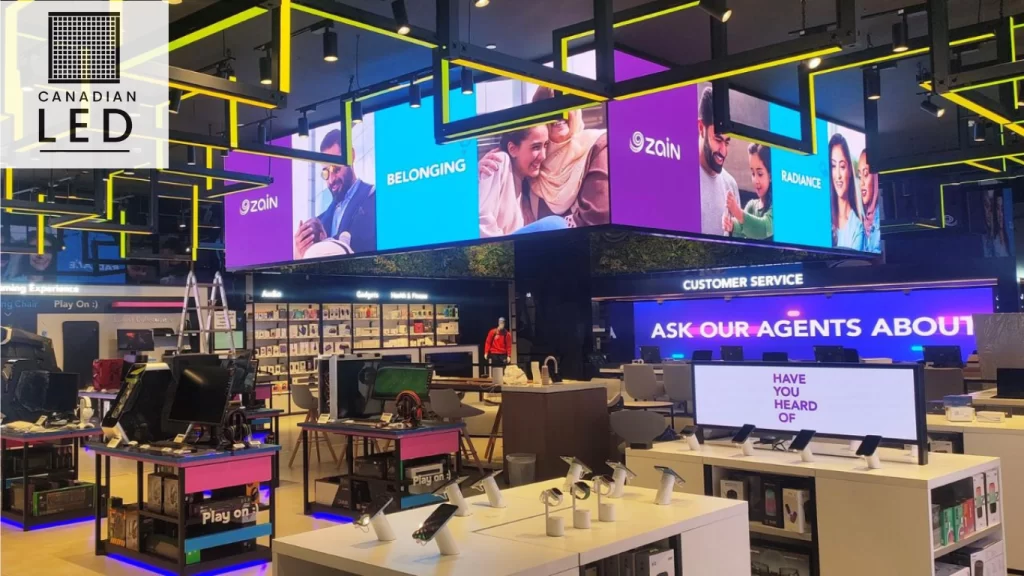
2. Outdoor LED Screens
Outdoor LED screens are built to endure the elements—whether it’s rain, snow, or the intense heat of the sun. These screens are engineered to have higher brightness levels (typically 5000-8000 nits) to ensure they remain visible even in direct sunlight. They also come with weather-resistant features, such as water and dust protection.- Best For: Billboards, digital signage, transportation hubs, stadiums, and storefront advertising.
- Key Features: Ultra-bright display, weatherproof casing, high durability.
- Considerations: Outdoor screens require careful installation to ensure they’re securely mounted and fully protected from environmental damage.
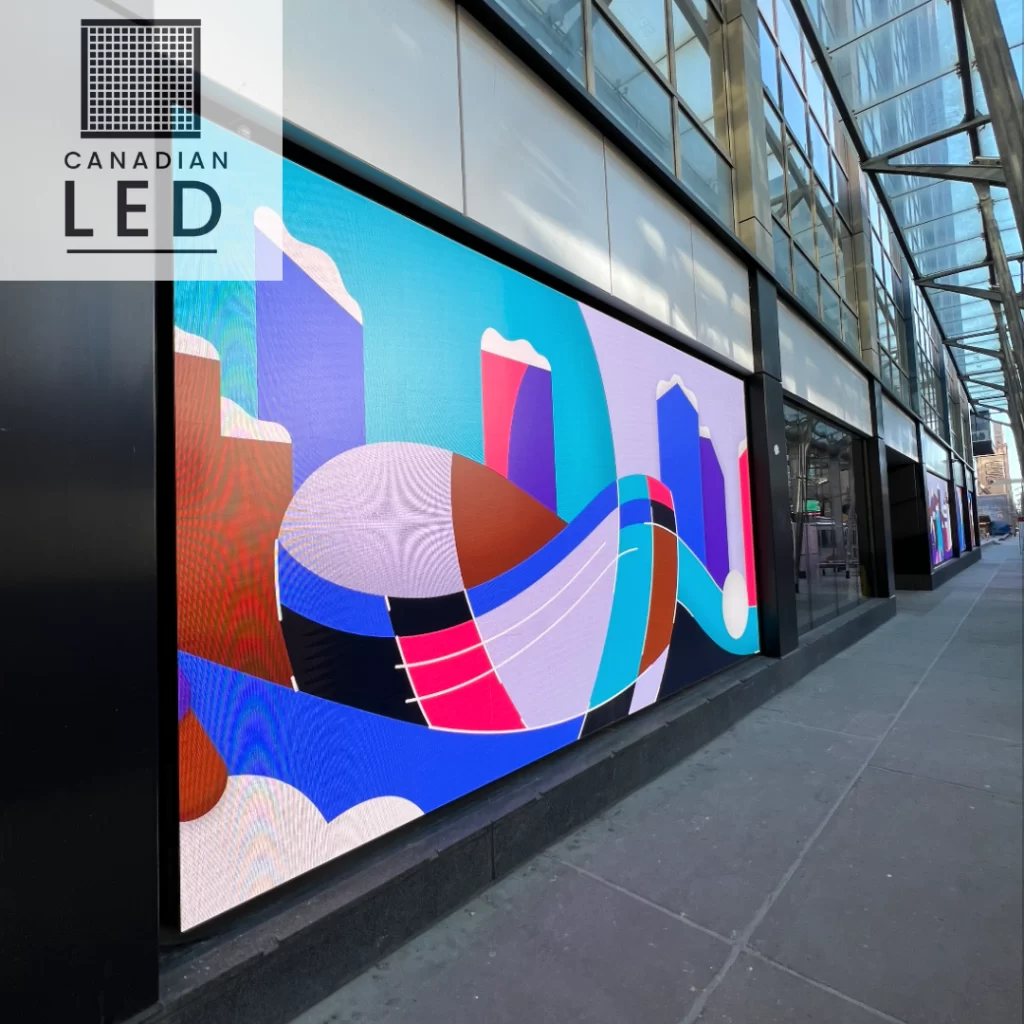
3. LED Video Wall
If you’re looking to make a huge visual impact, a LED video wall might be the right choice for your business. These displays are made up of several LED panels that work together to form one large, seamless screen. Video walls are perfect for large venues like sports arenas, trade shows, and entertainment events.- Best For: Large conferences, trade shows, concerts, sports arenas, and high-traffic public spaces.
- Key Features: Modular design, excellent video and image output, scalable to any size.
- Considerations: High initial cost, but the result is an unforgettable visual experience.
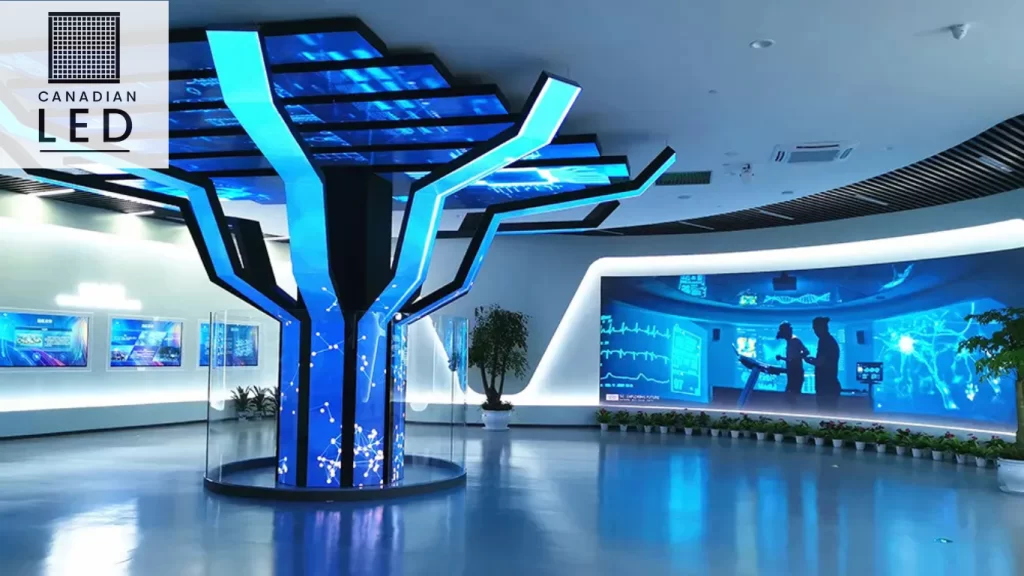
4. Transparent LED Screens
One of the more creative and modern LED options are transparent LED screens. These displays are designed to allow light to pass through while still showing content. This makes them perfect for high-end retail stores or exhibition spaces where you don’t want to obstruct the view behind the screen.- Best For: Retail environments, exhibitions, modern office spaces.
- Key Features: See-through design, lightweight, energy-efficient.
- Considerations: Lower brightness than standard LED screens, which may limit their use in very bright environments
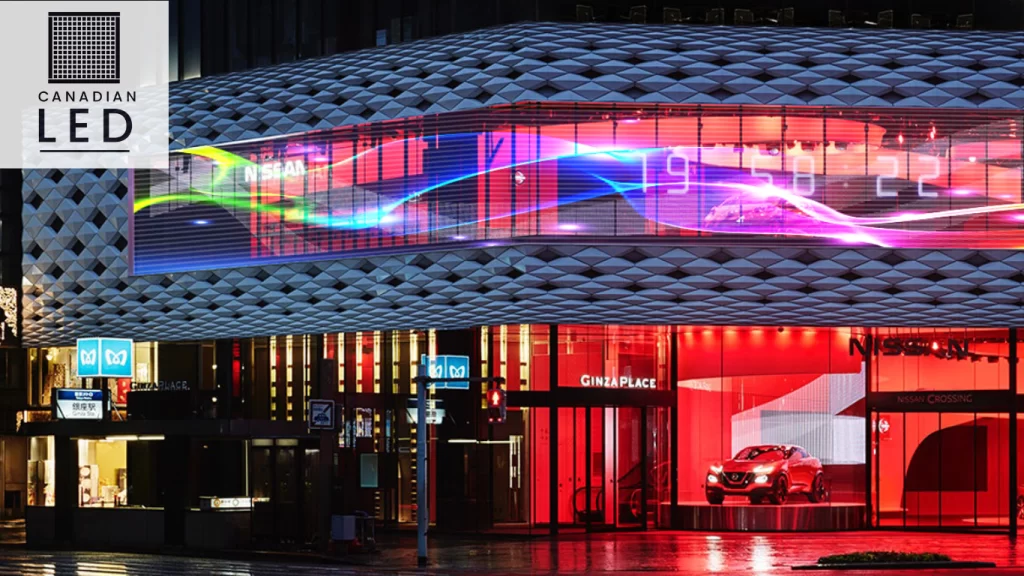
A cutting-edge transparent LED display enhances the exterior of a modern commercial building, delivering dynamic, high-visibility digital advertising.
5. Flexible LED Screens
For businesses that want something truly unique, flexible LED screens offer endless creative possibilities. These displays can bend and conform to a variety of shapes, making them perfect for curving walls, art installations, or innovative designs in museums and entertainment venues.- Best For: Museums, art installations, creative exhibitions, curved displays.
- Key Features: Flexible, customizable, lightweight.
- Considerations: More expensive than traditional screens, and installation can be more complex.
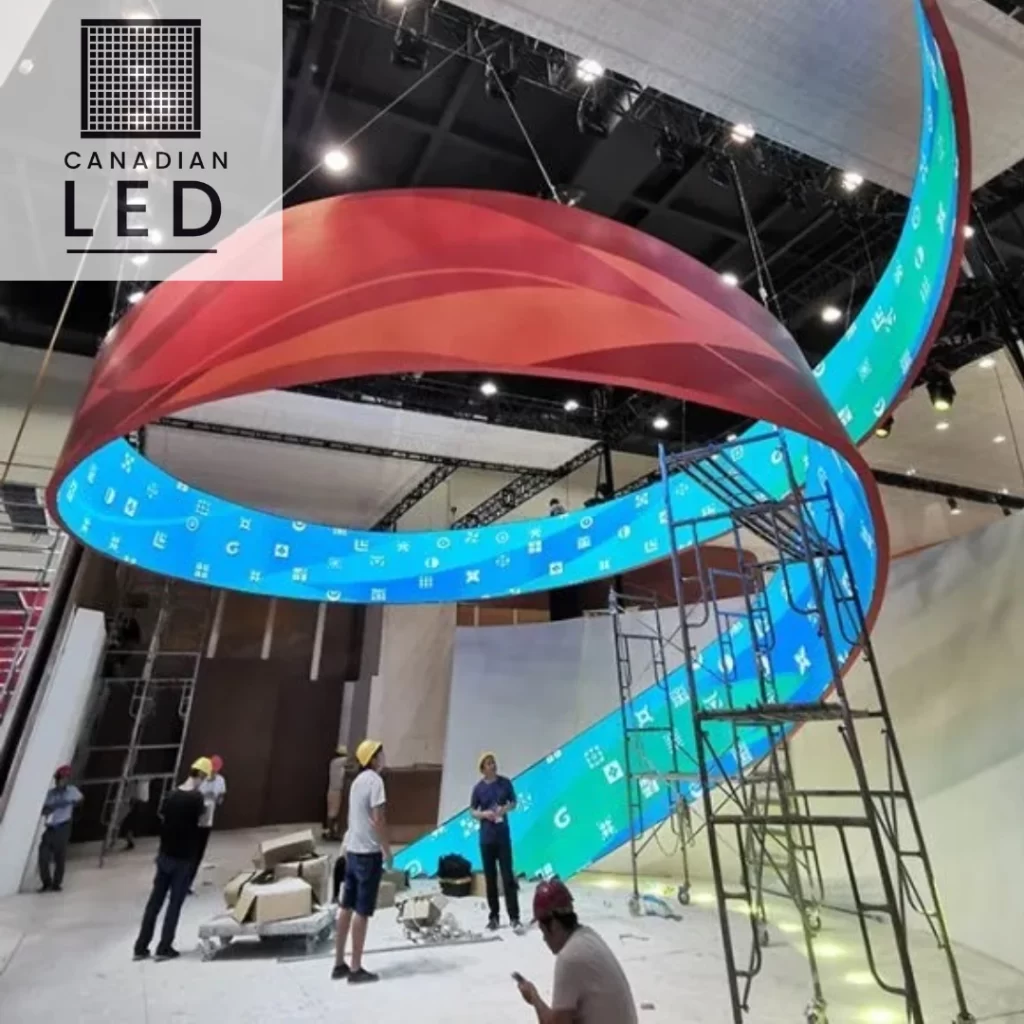
A high-resolution, flexible LED display being installed in a stunning spiral shape at an exhibition, showcasing cutting-edge digital signage technology.
How to Choose the Right LED Screen for Your Business
Now that you’re familiar with the different types of LED screens, it’s time to dive into the key factors that should influence your decision. These are the things I always consider when helping a client select the right screen:1. Purpose and Use Case
What do you need the LED screen for? Are you looking to engage customers with advertising? Display internal messages for employees? Or perhaps you need to enhance your worship experience with clear visuals and lyrics for a LED screen for churches? Your screen’s purpose should be the starting point for your decision-making process.2. Location and Environment
Where will the screen be placed? This is crucial because it determines whether you need an outdoor or indoor display. Outdoor screens need to have high brightness levels to remain visible in the sun and must be weatherproof to handle rain, snow, and other elements. Indoor screens can have lower brightness and are designed for more controlled environments.3. Pixel Pitch and Resolution
Pixel pitch refers to the space between individual pixels on the screen. Smaller pixel pitches provide higher resolution, which is perfect for close viewing distances. Larger pixel pitches are better for outdoor advertising and situations where the screen will be viewed from a distance. It’s important to consider the viewing distance when selecting pixel pitch.4. Budget and Long-Term Costs
LED screens vary in price based on their size, resolution, and features. It’s important to set a budget that includes not only the cost of the screen but also installation, maintenance, and energy consumption. For example, a LED video wall will be significantly more expensive than a smaller indoor screen, but it may be the right choice for your business if you’re looking for a high-impact visual experience.